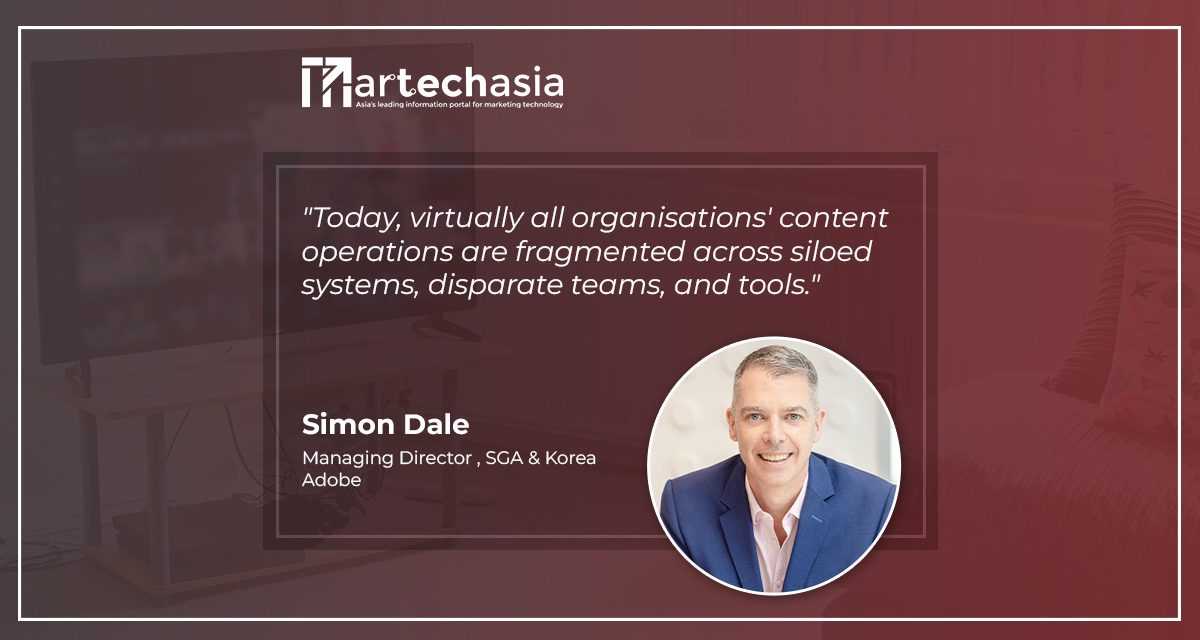3 critical capabilities for scaling content in the digital economy.
The last several years saw brands accelerating their move to digital so they could maintain, strengthen, and forge new customer connections. Finding success in the digital-first economy depends on the ability of companies to deliver experiences that feel personal to consumers — content and engagements that are tailored, easy, and even entertaining. In this high-speed, high-stakes environment, brands must create and deliver these deeply personal and effective experiences to millions of customers, in milliseconds.
The heart of effective personalisation is great content. Companies that personalise customers’ experiences with meaningful content not only increase engagement and order value, they also build trust with customers. In fact, it was found that 81 percent of consumers in Southeast Asia say that relevant content delivered at the right time and place boosts their trust with a brand, according to a recent Adobe study that surveyed more than 5,000 consumers in Asia Pacific.
While the benefits are clear, creating enough content and keeping up with consumer trust at the velocity required to deliver millions of meaningful interactions quickly is challenging.
Today, virtually all organisations’ content operations are fragmented across siloed systems, disparate teams, and tools. This has resulted in inefficient workflows and content that’s not aligned to strategy, which slows time-to-market for content delivery and personalisation.
Innovative brands are already tackling the challenge by creating high-powered content machines that apply intelligence and automation to streamline the process — from creation to delivery to optimisation. Here is how they do it.
- Thoughtful architecture that builds on existing frameworks
Creating the right architecture from workflows, permissions, and authoring models is a crucial part of the infrastructure required to support content velocity. As brands build large ecosystems where content travels, defining the foundation through metadata and creating bridges between various systems can expedite workflows. With today’s (and tomorrow’s) distributed and hybrid workforce, it is paramount to ensure the people within your organisation can work independently and also collaborate with both internal and external teams.
When this capability is in place, brands can leverage reusability. Reuse of assets comes in two forms: content creation and content distribution. Content creation can stem from generating metadata through a creative brief or structuring a digital asset management (DAM) to provide the right content. This scenario supports the reuse of assets through different channels or audiences. Understanding the elements of content architecture that make up a digital ecosystem allows brands to build the right foundation to help drive velocity and ensure effective collaboration.
Companies that invest in content velocity reap a range of benefits in return—including more balanced workloads for marketers and creatives, visibility for managers and the ability to measure creative efforts by the C-suite. Most importantly, brands can leverage a plentiful variety of rich content to animate personal customer experiences that will give them a competitive edge in the digital economy. - Using the right tools for effortless collaboration
The content lifecycle is a maze of people, processes, and technologies located inside and outside of an organisation, and across different offices (personal and professional) and geographies. The operations are inherently complex and scaling up increases the challenges. Creators and marketers are caught in the middle, and often spend much of their time on tactical to-dos instead of high-value creative and strategic activities. In such cases, marketing workflow tools can help teams manage this daunting process in a single workstream across the entire content lifecycle.
A common challenge is keeping up with creative changes and project updates from various teams. Standardizing workflows within one solution allows creatives to edit assets within their own creative tools, stakeholders to review those assets, and marketers to ensure they’re approved, on-brand and get delivered on time to the appropriate marketing campaign.
Actively managing and connecting the full spectrum of content activity helps unify creative, product, and asset management, increasing brand consistency, and accelerating content velocity. - Intelligent automation speeds up content delivery
Building a powerful content engine that can scale asset production and delivery can’t happen without intelligent automation. Built-in, cutting-edge intelligence allows brands to create, manage, adapt, and publish rich media for content across every step of the personalised customer journey.
Without intelligence, an internal creator charged with generating and publishing thousands of personalised banners for an upcoming marketing campaign would likely be mired in mundane tasks such as removing backgrounds, replacing objects, cropping, and creating web renditions so each asset can be delivered for different screen sizes. Adding more resources like an external agency racks up hours and budget—and adds complications.
With intelligent DAM, one file can be personalised during the last mile of the content journey, making delivery and iteration much easier and faster.


















